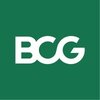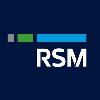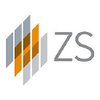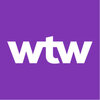


i
McKinsey & Company
Filter interviews by
McKinsey & Company Senior Associate Interview Questions and Answers
McKinsey & Company Senior Associate Interview Experiences
2 interviews found
I applied via Referral and was interviewed before Jan 2024. There were 3 interview rounds.
Gaming test to test the analytical problem solving skills
Business problem case study
Business problem case study
I applied via Referral
Interview Questionnaire
17 Questions
- Q1. What is lean manufacturing ?
- Ans.
Lean manufacturing is a systematic approach to identifying and eliminating waste in the production process.
Focuses on continuous improvement
Aims to increase efficiency and reduce costs
Involves all employees in the process
Uses tools such as value stream mapping and 5S
Examples include Toyota Production System and Kaizen
- Q2. What are your strengths?
- Ans.
My strengths include strong analytical skills, attention to detail, and effective communication.
Strong analytical skills
Attention to detail
Effective communication
- Q3. What motivates you?
- Ans.
My passion for learning and growth drives me to excel in my work and take on new challenges.
I am motivated by the opportunity to learn and develop new skills
I thrive in challenging environments that push me to grow
I am driven by a desire to make a positive impact and contribute to the success of my team and organization
- Q4. Examples of Leadership
- Ans.
Leadership is the ability to inspire and guide a team towards a common goal.
Setting a clear vision and goals for the team
Communicating effectively with team members
Motivating and empowering team members
Leading by example
Encouraging collaboration and teamwork
Taking responsibility for team successes and failures
Providing constructive feedback and coaching
Adapting to changing circumstances and making tough decisions
Buildi
- Q5. What was your contribution? What did you do different?
- Ans.
I introduced a new project management tool and streamlined the communication process.
Implemented a project management tool to track progress and deadlines
Created a communication plan to ensure all team members were informed and updated
Established regular check-ins to monitor progress and address any issues
Encouraged collaboration and teamwork to improve efficiency
Trained team members on the new tool and communication p
- Q6. Are you happy with your life path? What would you go and change?
- Ans.
Yes, overall happy but would change some decisions.
I am content with my career choice but would have pursued a different major in college.
I am happy with my relationships but would have ended some toxic ones earlier.
I am satisfied with my current location but would have traveled more in my younger years.
I am grateful for my experiences but would have taken more risks and stepped out of my comfort zone.
- Q7. Why ISB? Why ITC? Why not MBA after IIT?
- Ans.
ISB and ITC offer unique opportunities for growth and development that an MBA after IIT may not provide.
ISB offers a diverse and experienced cohort, world-class faculty, and a strong alumni network.
ITC is a renowned company with a strong focus on sustainability and social responsibility.
An MBA after IIT may not provide the same level of exposure to industry leaders and practical business experience.
ISB and ITC align wi...
- Q8. Biggest achievement! What did you do?
- Ans.
Developed and implemented a new project management system resulting in a 20% increase in project efficiency.
Identified inefficiencies in current project management system
Researched and evaluated potential solutions
Collaborated with team to design and implement new system
Provided training and support to team members
Measured and analyzed results, resulting in a 20% increase in project efficiency
- Q9. What other interviews I had and was appearing? Which was the best one till now?
- Q10. How was Mckinsey’s interview different from BCG?
- Ans.
McKinsey and BCG interviews differ in their approach and focus.
McKinsey focuses more on structured problem-solving and case interviews.
BCG emphasizes on fit and personal experience.
McKinsey interviews are more quantitative and analytical.
BCG interviews are more qualitative and behavioral.
Both firms have their unique interview styles and evaluation criteria.
- Q11. Why ISB?
- Ans.
ISB offers a unique learning experience with its diverse student body, world-class faculty, and strong industry connections.
ISB's diverse student body provides a global perspective and networking opportunities.
World-class faculty with extensive industry experience ensures practical learning.
Strong industry connections provide access to top companies for internships and placements.
ISB's focus on leadership development a...
- Q12. Examples of Leadership experience? Your role in it?
- Ans.
As a team leader at XYZ Corp, I led a team of 10 in a project to increase sales by 20% in 6 months.
Led a team of 10 in a sales project at XYZ Corp
Developed and implemented strategies to increase sales by 20% in 6 months
Provided guidance and support to team members to achieve project goals
Monitored progress and made adjustments as needed to ensure success
Facilitated communication and collaboration among team members
Reco...
- Q13. What is your leadership style?
- Ans.
My leadership style is collaborative and empowering.
I believe in involving team members in decision-making processes
I encourage open communication and feedback
I provide support and resources to help team members succeed
I lead by example and set high standards for myself and others
I recognize and celebrate team members' achievements
For example, when working on a project, I would gather input from all team members and as...
- Q14. What is lean manufacturing?
- Ans.
Lean manufacturing is a systematic approach to minimize waste and maximize value in production processes.
Focuses on continuous improvement
Eliminates non-value added activities
Involves all employees in the process
Uses tools like Kanban, 5S, and Kaizen
Examples include Toyota Production System and Just-In-Time manufacturing
- Q15. Explain a particular point on the resume? Impact of what I did
- Ans.
Implemented a new customer service system resulting in a 20% increase in customer satisfaction
Developed and implemented a new customer service system
Conducted training sessions for customer service representatives
Monitored customer feedback and made necessary improvements
Increased customer satisfaction by 20%
- Q16. Grades: Explain them
- Q17. Leadership experience from IIT. Was I proud of my performance at IIT…vis a vis ISB?
Interview Preparation Tips
Experience: Client is a PSU Bank. Currently the account opening process takes between 60 minutes- starting from the time he comes to clerk counter to the time customer leaves with Passbook, Cheque-book and account number. How will you cut it down to < 10 minutes and still deliver all the 3. Drew a complicated process map.
Basic facts given at start of case:
Current process (60 minutes) : The clerk interacts with customer to provide him the account opening form, does the first round scrutiny, does the KYC, sends form to officer for approval, officer approves, clerk opens account & creates account number & passbook, sends to officer to approval , officer approves, clerk creates the cheque book, sends to officer to approval , officer approves. Clerk hands over the Account Number, Pass book and cheque book to customer.
Facts shared ( shared by Nigel only if you ask)
• Customer is issued form and he submits a filled up form to clerk = 15 minutes
• Scrutiny of form = 10 minutes
• KYC takes 5 minutes
• Each approval loop with officer takes – 10 minutes ( 3 loops=30mins)
• Approval cannot be done by Clerk as per union rules
Key Issues :
Methodologies recommended
a. Break down the process into various smaller steps. Do a time work-motion study to understand the component steps. Then do a Pareto (80/20) and attach the areas which consume the most time.
b. Break down the process into various smaller steps. Classify each step as
1. Adds Value to Customer from a/c opening perspective
2. Non Value Add – can be minimized, not eliminated
3. Non Value Add – can be eliminated.
By experience, 80% of the time is Non Value add ( 2&3). Do a Pareto within that and work out the various ways of reducing time.
Solutions
1. I had recommended an Internet based system where major customer information and checks would happen online and only a mandatory KYC (Know Your Customer) process would take place onsite.
2. McKinsey had (a) Combined the jobs of the clericals and officers (b) Used Pre-printed blank welcome kits with cheque books, pass books & account numbers. (c) Only KYC was done onsite (RBI regulations)..account names were incorporated subject to KYC confirmation.
Ramifications
1. Banking Unions (PSU): How will they react to job rationalisation/ eliminating clerical roles?
2. If you combine the roles (clerk & officer) and make the officer do it…wont your salary bill increase…since the initial clerk to officer ratio (5:1) is now (0:5). What emerged is that in most PSUs, experienced clerks earn similar or more to officers. Hence not much of wage impact.
Tips: 1. Stay Confident & Cool.
2. Take control of the Case discussion. If the interviewer presents information in a user-unfriendly or non standard manner, ask him to do it in the way you want to or ask him to help you out in mapping the information in your framework.
Round: Case Study Interview
Experience: Client is a no 1 boiler manufacturer in India. His profit margins are at 11% while industry expectations are at 15%. Help him out in reaching this target.
Tried to evaluate product mix, profitability etc. – Client makes a wide span of products. But interviewer was not interested in specifics. Wanted me to identify the key cost & revenue drivers.
Costs
1. Are we sourcing Raw material effectively & cheaply? Can we go to china etc?
2. Can we re-evaluate Make vs Buy option for all products in the Bill of Material.
3. Are our products over- designed? Do they consume more raw material than competition.
4. Do we have higher fixed costs- new investments, labour<>variable costs?
5. Do we have economies of scale for all products, parts etc?
Was told to identify sources of revenue to increase margins
1. Change product mix
2. Evaluate newer- more profitable markets
3. Brand your own products (the client is a manufacturer for others, not seller) -> refer to brand and market creation
costs.
4. Service Business – Repair, Spares & Consumables ( Missed this out completely- was finally hinted by interviewer)
Conclusion: Services were neglected by client. Potential revenue source. Client has a large installed base of customers. So he can do this business better, build service model and capabilities.
Options
1. Sell Maintenance contracts with boilers
2. target installed base of boilers
I had added that he can widen his base by targeting all brands of boilers (assuming differences were not significant). Service is a high margin business since operations at units are hampered leading to production losses in the event of boiler failure.
Tips: 1. Stay Confident & Cool even if you miss the above fact. Move on and build on it. Relate the case or elements of it with work and
discuss it.
2. Show Energy during the interview!
Round: Case Study Interview
Experience: Case 1
Client is a music company ( RPG-Saregama). It was not making money.
Revenue side- affected by Music piracy and music channels. They affected price and sales negatively
Cost Side – Producers still sold music rights at higher prices. Since music producers are few- their consolidation hurt the music
industry bad.
Additional facts : All big banners like Yashraj films etc end up making losses for the company due to high music right costs.
Typical successes / margins have been in low (B/C segments with films like Murder etc)
Analysis
Structured case as Customers, Suppliers and Competition.
Option1 – Increase revenues
While analyzing customers- not much information available- no segments -> based on discussion, generated multiple sources of revenues for music industry
a. CD/Cassettes
b. Radio / TV rights – do not provide full song clips to channels. Only teasers. If song is a hit, channels would ask for it and thus can pay for it.
c. Internet- Streaming rights
d. I-pod type devices
e. Ring tones
Told to explore the cost options in details.
Option2 – Decrease costs
Me :Proposed Risk sharing / royalty based mechanisms.
NK : All the big banners do not agree to it
Me : But we can get the smaller producers to agree… (NK agreed that it can be explored)
NK: Why do these companies deal with big producers when they make losses? What is important in the buyer industry structure
After some discussions…arrive at the structure – Big producers (A type) and Small Producers (B&C types)
Possible reasons I could come up with include-
Me: Possible reasons can include
a. Long term relationship in the industry
b. A large number of smaller successes subsidizing the losses from larger ones
c. Association of music companies with big producers offers
them clout in the industry to deal with smaller producers…they can thus negotiate better deals with B&C type producers.
NK : Yes.… the big banners are like loss leaders.... they help music companies in getting better deals from smaller producers. And also, the industry is very relationship driven…some of the deals are purely based on established long working relationships.
Case 2 :
Your client is Tata Motors. The Direct material cost of Tata Indica is ₹150,000. The basic design is same for the 1 lakh car. How can you bring the cost down to ₹75000…outline the basic levers.
Structured it into 4 areas
a. Rationalize the vendor base to get economies of scale and scope.
b. Rationalize parts across platforms of vehicles to get further economies.
c. Rationalize design – Certain parts might be over designed or inefficiently designed leading to increased costs on account of excess materials or additional processing (labour, overhead etc)
d. Evaluate every part from a Make or Buy perspective. This would enable focus on core areas and help gain cost advantage in sourcing items like Tyres, O Rings, Nuts-Bolts etc.
After that he wanted to do a numbers/ quant check on me…so the example was extended to calculate certain % values.
Tips: 1. Prioritize issues for discussions with the interviewer.
2. Be prepared for anything!
Round: Case Study Interview
Experience: Case
Client is a confectionery manufacturer making chocolate bars. In the 1980’s it had a mfg base in UK. However, in early 90s it set up another facility in France. During mid 90’s the business faced decline in revenues and profitability. What could be the reasons / hypothesis and what would you recommend?
Enquired about the basic details
a. Product mix – single chocolate bar
b. Supply- demand check -> Demand has been declining. No problems in supply side.
Discussed the Revenue- Cost equation.
Revenue can go down by the following
a. Competition introducing newer/ better/cheaper products
b. Changing customer behavior- more health conscious people/ availability of substitutes/ imports etc
c. Any changes done to product flavour/ taste etc..which can turn off customers.
Cost :
Discussed the standard Fixed and Variable costs. Was asked to break it down further.
Variable – Raw Materials, Distribution etc
Fixed – Depreciation, Capacity Utilization etc
a. Fixed Costs – New plant – higher depreciation costs. + Degree of capacity utilization ( this was reason 1)
UK – mfg capacity = 15 mn units / year
Actual production = 700,000 units per month approx 55% capacity utilization
France – mfg capacity = 20 mn units / year
Actual production = 650,000 units per month approx 39% capacity utilization.
These numbers were generally thrown around to evaluate my comfort with numbers.
Interviewer himself jumps to part (b)
b.Variable Costs
Fact 1 Raw material costs are 25% of Sale price vs 20% for competition
1/ Asked Oliver on the supplier base (local, import & no of suppliers) and amounts sourced. Decreased revenues could have decreased our sourcing economies. OK with this…wanted more reasons….
2/ Checked if both were importing same quality of material. We could be using better quality products compared to competition.
3/ Checked if we hedged these items while procuring…(Key Point
2) Competition was obviously doing this better and saving costs.
Fact 2 Our Distribution costs are 15% of sale price vs competition 10%
Key differentiators could be…
We have our own trucks ..competition uses 3rd party suppliers
1. More costs on account of people, fixed costs of trucks + empty trucks coming back (Low utilization)
2. We send part loads…competition does not worry since his transporters can optimize on truck load thru other customers.
c. General calculations
Another round of quant check. Thrown some numbers to calculate cost per unit of the 2 factories (UK & France )
Each unit has 200 employees x 40 hrs/week x 50 wks /yr
UK wages = $ 15/ hour
France Wages = $ 20 / hour
After this told to calculate profitability of each unit at both locations given Raw material = 25% of sale price ($ 2/unit).
Total numbers check
Recommendations
1. Rationalize the production quantities at each unit - would depend on the overall inward and outward transportation costs also..apart from capacity utilization. (Excess transport costs in serving new markets would need to be checked for)
2. Use excess capacity for producing 3rd party chocolates. Also evaluate if factory can be re-tooled / flexible to manufacture other products apart from chocolate.
3. Shut down 1 plant. –
a. See how efficient it would be operationally. No backup/excess capacity would then be available as a strategic/contingency resource.
b. Also potential trouble on the political front – example if French unit was shut down, there could be a political fallout as well as French customers might boycott your products. (cited Mittal-Arcelor )
c. Union issues- long term dispute- can dilute brand value of business.
Tips: Be prepared for all sorts of numbers/calculations…take time out in case there are huge calculations…I did that…small calculations
were done verbally.
Interviewer also wanted to check if I could come up with all types of hypothesis on various facts. Be prepared to think creatively and use your common sense to remove non relevant stuff.
Round: Case Study Interview
Experience: Client manufactures auto forgings @ 200 per day. Increase it to 400 per day… How?
Enquired if market demand was justified to double output…Market would be able to accommodate 200 additional units.
Wanted me to identify key levers. After a lot of round-about and false steps…learnt that current capacity utilization was 33% only!!
Interviewer wanted a list of things to check …this is what I discussed..
a. Maintenance time records– Breakdown & Planned
b. Setup/ Changeover times on a/c of high product variety
c. Non availability of Material
d. Non availability of Labour – absence/ unmanned breaks
e. Shut down due to utility failures (electricity etc)
f. Quality related losses.
Tips: Be prepared to be grilled.
Round: Case Study Interview
Experience: This seemed a test of whether I could do hypothesis and do some basic math.
Client is a Financial planning & management software company. 3 product lines + 1 service line.
1. Large enterprises – highly customized, large business customers, direct sales force used, consultants needed, sold at CEO/CIO level.
2. SMEs – industry specific package- sold thru dealers/ distributors etc to anyone who wants to buy
3. Individual customers thru regular retail channels.
4. IT consulting – pre/ post support
Question 1: Revenues are declining. What hypothesis would you generate to identify sources of decline…
g. Along segments mentioned above
h. Geographical segments
i. Industries
j. Existing vs New Customers
Question 2: Assume Enterprise segment is losing revenue. What hypothesis can you generate …(asked to generate 15…came to 11) Just think out aloud and discuss ..some of the hypothesis discussed were
d. Changes in regulations
e. M&A in the industry..customers hesitate to buy.
f. Customers think a better product is in the wings and don’tbuy the existing one.
g. New product is complicated …has greater cost and training needs.
h. Sales force not qualified etc.
Question 3: Suppose you find out that the sales force has been spending more time selling simpler product to SME than attend larger customers…enterprise product needs greater effort. wWat would you do?
1. Track sales and channels actively
2. Change incentive structure…
What actions would you take and implications of those.
Tips: Think out loud with the interviewer.
Skills:
College Name: Indian School Of Business (ISB)
Top trending discussions






Interview questions from similar companies

I applied via Campus Placement and was interviewed before Feb 2021. There were 3 interview rounds.

Tests are Pymetrics and an online case. Pymetrics is a personality test of sorts (risk aversion, pattern recognition, etc.) this was benchmarked against successful Consultants. Online case is multiple choice but the questions flow like a normal case interview. You will get a final round interview if you do really well on them. If you just ‘pass’, you have to have an internal designation of a high priority or very high priority candidate. (See advice)
Standard 2 case interviews with senior leaders, already a lot of material on this elsewhere
Interview Preparation Tips

I applied via Campus Placement and was interviewed before May 2021. There were 3 interview rounds.
Internal case of a biscuit manufacturing company. Details about company background, sales, figures are given and based on those 3 questions were asked.
Part 2 of the same case study was asked where the company should go for IPO or expansion in local market. based on the facts, decision and justification had to be given
(1 Question)
- Q1. Tell me about yourself
- Ans.
I am a highly experienced consultant with a strong background in problem-solving and strategic planning.
Over 10 years of experience in consulting for various industries
Expertise in analyzing complex business challenges and providing effective solutions
Proven track record of delivering successful projects on time and within budget
Strong communication and interpersonal skills, able to build rapport with clients
Ability to...
Interview Preparation Tips

I applied via Approached by Company and was interviewed before Sep 2021. There were 3 interview rounds.
(2 Questions)
- Q1. Basic devops question
- Q2. Agile process discussion
(2 Questions)
- Q1. Kubernetes deployment
- Q2. Ansible basic question
(2 Questions)
- Q1. Salary discussion with HR manager
- Q2. Negotiation salary with HR manager
Interview Preparation Tips
- Devops

Interview Questionnaire
1 Question
- Q1. General Accounting Concept
Interview Preparation Tips

Interview Questionnaire
2 Questions
- Q1. Tell me about yourself?
- Q2. Java oop questions

I applied via Referral and was interviewed in Jun 2021. There was 1 interview round.
Interview Questionnaire
1 Question
- Q1. Recent amendments
Interview Preparation Tips

I applied via Naukri.com and was interviewed in May 2020. There were 3 interview rounds.
Interview Questionnaire
1 Question
- Q1. If you have work experience, majority of the questions will revolve around it along with general questions related to about your own self, interests, achievements etc.
Interview Preparation Tips
If a fresher - except general questions around the industry you are applying for including recent news, developments, basic product service understanding and so on.

I applied via Referral and was interviewed before Jan 2021. There were 3 interview rounds.
(1 Question)
- Q1. 1) how to do version comparison in Smartforms.
- Ans.
Version comparison in Smartforms
Use the 'Version Management' option in Smartforms
Select the form and click on 'Versions' button
Compare the versions and select the desired one
Preview and save the form with the selected version
(1 Question)
- Q1. Deep discussion on projects worked and role
(1 Question)
- Q1. Salary discussion and negotiations
Interview Preparation Tips
- SAP ABAP
- OO ABAP
Skills evaluated in this interview
McKinsey & Company Interview FAQs
Tell us how to improve this page.
McKinsey & Company Interviews By Designations
- McKinsey & Company Consultant Interview Questions
- McKinsey & Company Business Analyst Interview Questions
- McKinsey & Company Business Presentation Specialist Interview Questions
- McKinsey & Company Summer Intern Interview Questions
- McKinsey & Company Intern Interview Questions
- McKinsey & Company Junior Associate Interview Questions
- McKinsey & Company Associate Interview Questions
- McKinsey & Company Analyst Interview Questions
- Show more
Interview Questions for Popular Designations
- Associate Interview Questions
- Associate Software Engineer Interview Questions
- Associate Consultant Interview Questions
- Process Associate Interview Questions
- Associate Engineer Interview Questions
- Research Associate Interview Questions
- Business Development Associate Interview Questions
- Customer Service Associate Interview Questions
- Show more
McKinsey & Company Senior Associate Interview Process
based on 1 interview
Interview experience
Senior Associate Interview Questions from Similar Companies
Fast track your campus placements
McKinsey & Company Senior Associate Reviews and Ratings
based on 7 reviews
Rating in categories
|
Business Presentation Specialist
557
salaries
| ₹2.2 L/yr - ₹8.5 L/yr |
|
Associate
250
salaries
| ₹24 L/yr - ₹70.2 L/yr |
|
Analyst
246
salaries
| ₹8.5 L/yr - ₹25.6 L/yr |
|
Consultant
199
salaries
| ₹15 L/yr - ₹59.1 L/yr |
|
Senior Analyst
192
salaries
| ₹15 L/yr - ₹37 L/yr |

BCG

Deloitte

Ernst & Young

PwC
- Home >
- Interviews >
- McKinsey & Company Interview Questions >
- McKinsey & Company Senior Associate Interview Questions



















